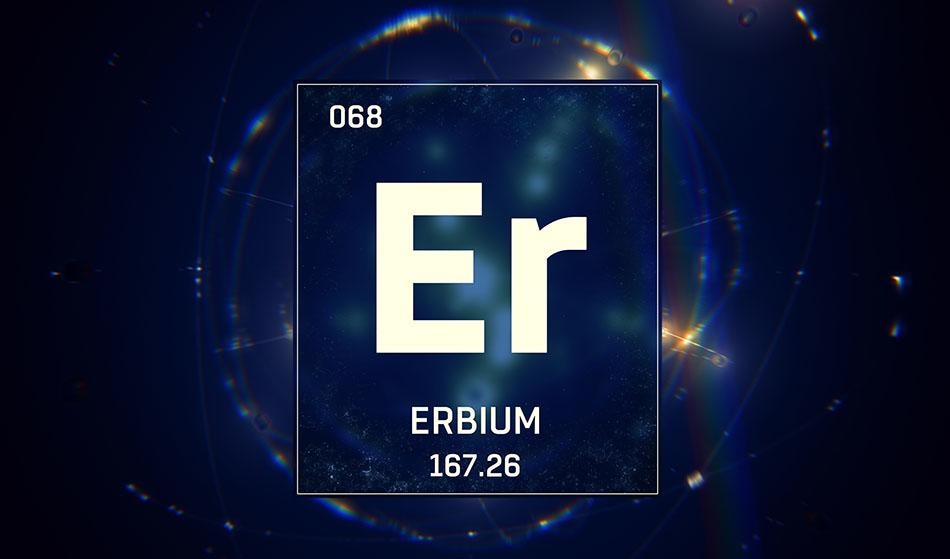Dec 18 2001

remotevfex.com / Shutterstock
Part of the lanthanide series, erbium (Er) is a rare-earth element found in a wide range of minerals like blomstrandine, polycrase, fergusonite, euxenite, xenotime, and gadolinite.
C.G. Mosander discovered erbium in 1842 in Stockholm, Sweden. He divided “yttria” present in gadolinite into three fractions called terbia, erbia, and yttria. In that period, there was confusion between erbia and terbia, and eventually, terbia became to be known as erbia.
Thus, the new erbia was found to contain five oxides called erbia, ytterbia, thulia, holmia, and Scandia. In 1905, James and Urban independently succeeded in isolating fairly pure Er2O3 (erbia). But it was only in 1934 that Klemm and Bommer were able to synthesize reasonably pure erbium metal through the reduction of anhydrous chloride with potassium vapor.
Appearance and Properties
Erbium metal is malleable and soft in its pure form and has a bright silvery, metallic sheen. Just like most of the rare-earth metals, erbium’s properties differ based on the amount of impurities present.
Erbium does not form oxides as quickly as certain other rare-earth metals, and hence it is quite stable in air. It has excellent electrical resistivity, and its properties are similar to that of holmium and dysprosium. It is invariably found in combination with other rare-earth metals and exists in small amounts within the same minerals as dysprosium (xenotime, gadolinite, and fergusonite).
The Earth’s crust contains 3.8 ppm of erbium. This element slowly tarnishes in air, dissolves in acids, and reacts gradually with water.
Erbium that occurs naturally is a combination of six isotopes, and all of these are stable. So far, nine radioactive isotopes of erbium have been identified.
Applications
Erbium is being used in metallurgical and nuclear sectors. When this element is added to vanadium, it reduces the hardness and enhances the workability.
Erbium salt has an attractive pastel color. Erbium oxide, which gives a pink color, has been utilized as a colorant in porcelain enamel glazes and glasses.
In its pure metallic form, erbium has limited applications; however, it is utilized as an alloying element with titanium. It is even used for making infrared absorbing glass. In the ceramics sector, erbium oxide is used for creating a pink glaze.